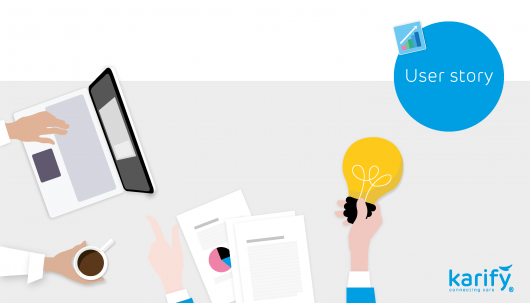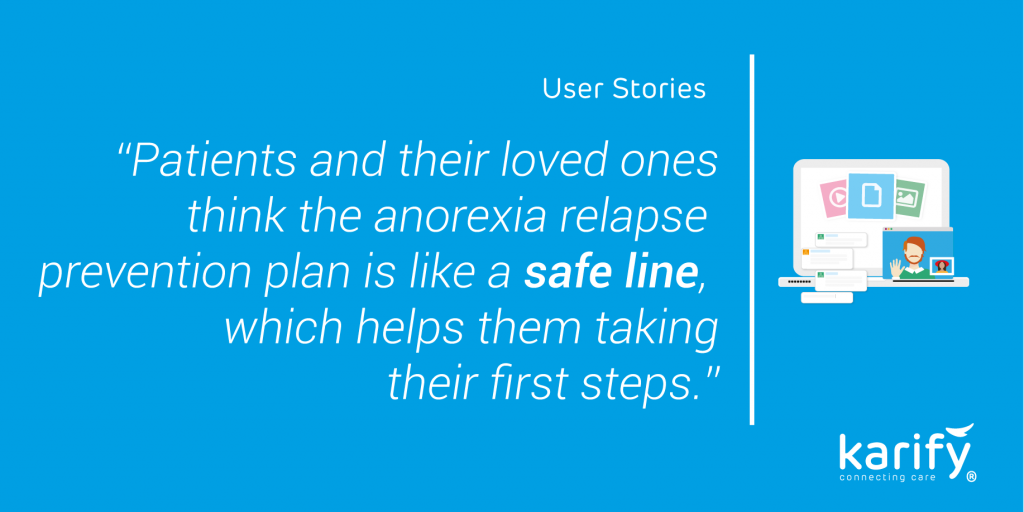Successfully integrated Anorexia Relapse Prevention [Part 1]

Anorexia Nervosa is a serious and often stubborn eating disorder. In the Netherlands, 1300 people with anorexia nervosa are added annually. Above all, 30 to 50 percent of people being treated for Anorexia Nervosa fall back after going through a successful treatment. A very high percentage that has to be reduced, according to the therapists at Altrecht Eating Disorders Rintveld. That is why they developed a Guideline Relapse Prevention, which was later integrated with an e-digital health treatment in Karify.
The treatment consists of making a personal relapse prevention plan and a follow-up care program that consists of a limited number of contact moments with the therapist. The results are promising: the relapse rates at Altrecht Eating Disorders Rintveld have been reduced to 11 percent!
We talked about the new approach with Tamara Berends, a nursing Specialist at Altrecht Eating Disorders Rintveld. This blog post features part 1 of the interview. Next week part 2 will be published.
Relapse prevention for Anorexia Nervosa
“The treatment of Anorexia Nervosa is difficult and relatively little is known about it,” says Tamara. “The guideline for relapse prevention is, therefore, based on, for example, relapse prevention programs from other problem areas such as forensic psychiatry, aggression and psychosis.”
“Research has shown that the risk of relapse is greatest in the first year and a half after treatment. That is why we have set up the online monitoring system, in which clients are followed on a very low frequency for at least 1.5 years. During this period they stay in contact through video calling, e-mails or filling out a progress monitoring form. Healthcare providers think along with clients remotely and call them for an appointment if necessary. ”
Which form of relapse prevention did you use before?
“In the first instance, this method was developed on paper in the form of a workbook with assignments that a client completed together with his therapist on location at the Altrecht clinic. However, we have a patient group that can work well with a computer: mostly youth between 12 and 30 years with a high loyalty to treatment. They often find it annoying to come here when they are at the end of their treatment, mainly because we work supra-regionally, so they sometimes have to travel for a long time. That’s why it seemed better to us and patients to be able to make remote orders online, instead of in the treatment room.”
Research: reduced relapse rate
“I recently published a study on Rintveld’s new relapse prevention approach. This shows that the relapse rate has been reduced to 11%. For youth, this percentage is even lower.”
Would you like to know more about our research department: read more
